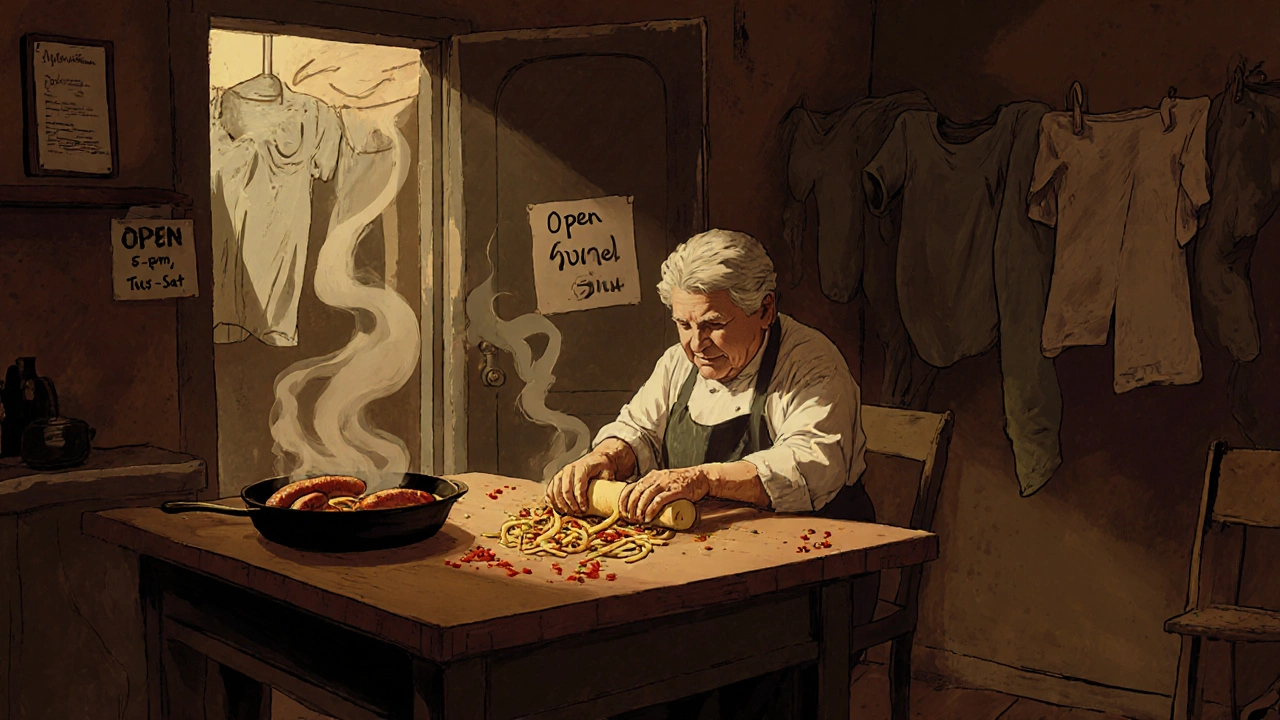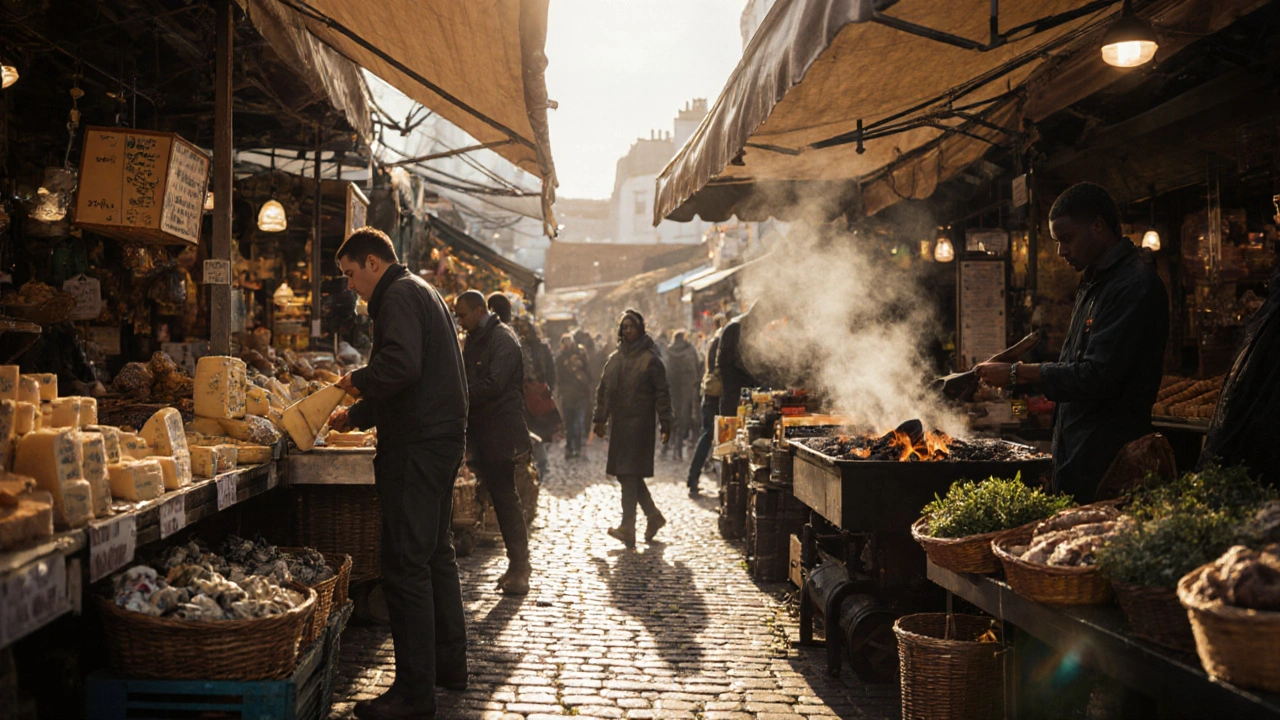London doesn’t just serve food-it serves stories. Every bite in this city carries a history, a migration, a family recipe passed down through generations. You can eat a perfectly spiced jollof rice in Peckham, then walk ten minutes and taste a Michelin-starred duck confit in Mayfair. The city’s food scene isn’t about prestige alone. It’s about authenticity, grit, and the quiet pride of someone cooking the food their grandma made back in Lagos, Lahore, or Palermo.
Where to Start: The Real London Food Scene
Forget the glossy travel blogs that list the same five restaurants every year. The real London food scene lives in the backstreets, the corner shops, the unmarked doors with a single sign in Urdu or Spanish. In 2025, over 80% of London’s restaurants are owned by immigrants or first-generation Brits, according to the London Food Board. That’s not a statistic-it’s the heartbeat of the city’s dining culture.
Start with Borough Market. Yes, it’s crowded. Yes, tourists take photos of everything. But if you go on a Tuesday morning before 10 a.m., you’ll find the real traders: the Portuguese cheese seller who brings in aged Queijo da Serra, the Polish baker whose rye bread takes 36 hours to ferment, the Jamaican jerk chicken vendor who’s been there since 2003. This isn’t a food hall. It’s a living archive.
Hidden Gems: Restaurants No One Talks About
Most guides miss these places because they don’t have Instagram accounts or fancy lighting. But locals know them by heart.
- Al Dente (Camberwell) - A tiny Italian kitchen run by a nonna from Sicily. Her ragù simmers for 12 hours. No menu. You get what she made that day. Cash only. Book via WhatsApp.
- Chai Point (Hounslow) - Not a chai shop. It’s a Punjabi family-run kitchen serving tandoori chicken with garlic naan that’s still warm from the tandoor. The owner, Ravi, remembers your name if you come twice.
- La Cucina di Nonna Rosa (Walthamstow) - Hidden above a laundromat. No website. Just a handwritten note on the door: “Open 5-9pm, Tues-Sat.” Their handmade orecchiette with wild fennel sausage will change how you think about pasta.
These places don’t advertise. They survive because people keep coming back. And if you’re lucky, you’ll be invited to sit at the table with the family after dinner.
High-End Without the Hype
London has more Michelin stars than any other city in the UK. But not all fine dining needs a velvet chair or a 12-course tasting menu.
St. JOHN in Smithfield is one of the most influential restaurants in the city. It doesn’t try to impress. It just serves bone marrow toast, roast chicken with parsley salad, and offal with precision and soul. Chef Fergus Henderson pioneered nose-to-tail eating here in the 90s. Today, his philosophy is everywhere-from street food stalls to corporate cafeterias.
Then there’s Brasserie Zédel in Soho. It’s not a Michelin star restaurant, but it’s the only place in London where you can eat a perfect steak frites, listen to a live jazz band, and have a glass of Burgundy for under £30. It’s the kind of place where you’ll see a City banker next to a street artist and no one bats an eye.

What’s Changing in 2025
The food scene in London is shifting fast. Three big trends are shaping the next decade.
- Zero-waste kitchens are now standard - Restaurants like The Ledbury and Claremont compost everything. Even citrus peels are turned into liqueurs. If a place still throws out bread crusts, you’ll hear about it on Reddit.
- Pop-ups are becoming permanent - Many of the best meals now come from chefs who started in food trucks. Shoryu Ramen began as a stall in Camden. Now it has three locations and a waiting list. The line for their tonkotsu broth still stretches around the block.
- AI isn’t replacing chefs-it’s helping them - A few kitchens use AI to predict ingredient shortages or optimize spice blends. But the hands that cook? Still human. Still tired. Still proud.
What to Avoid
Not every restaurant with a fancy name is worth your time. Here’s what to skip:
- Restaurants with “London” in the name - “London Grill,” “London Tapas,” “London Fusion.” These are usually generic chains with no connection to the city’s culture.
- Places with 500 photos of food on Instagram - If every dish looks like a magazine ad, it’s probably overpriced and undercooked.
- Brunch spots in Soho on a Sunday - Wait times are 90 minutes. The pancakes are soggy. The coffee is lukewarm. Go to The Breakfast Club in Dalston instead.

How to Eat Like a Local
You don’t need a food critic’s palate to eat well in London. You just need to know where to look.
- Go where the staff eats - Ask a server where they go after their shift. They’ll tell you. And they won’t lie.
- Visit during off-hours - Lunch at 1 p.m. on a Wednesday is quieter, cheaper, and often better than dinner.
- Walk without a map - Pick a neighborhood you’ve never been to. Walk until you smell something good. Follow it.
- Bring cash - Many of the best places still don’t take cards. Especially the ones with the longest lines.
Final Thought: Food Is the Real Culture
London’s museums are world-class. Its theatres are legendary. But if you want to understand what this city truly is, sit at a table with a plate of curry, a glass of wine, and someone who’s been here longer than you’ve been alive.
The food here doesn’t just fill your stomach. It tells you who we are. Where we came from. And where we’re going.
What’s the best time to visit Borough Market?
Go on a Tuesday or Wednesday morning before 10 a.m. The crowds are thin, the stalls are fully stocked, and the traders are still fresh. By lunchtime, it’s packed with tourists and prices go up. Early birds get the best cheese, the freshest oysters, and the warmest bread.
Are there good vegetarian options in London?
Yes-London is one of the most vegetarian-friendly cities in the world. Mildreds in Soho has been serving creative plant-based dishes since 1991. Farmacy in Notting Hill uses organic, seasonal ingredients in everything. Even traditional spots like The Ivy and St. JOHN now have dedicated vegetarian tasting menus. Don’t just ask for a salad-ask what the chef made that day without meat.
How do I book a table at a popular restaurant without paying a fee?
Skip OpenTable and Resy. Many top restaurants-especially the hidden ones-only take bookings via phone or WhatsApp. Call directly during business hours. Be polite. Say you heard about them from a local. Most will squeeze you in, even if they’re full. Some, like Al Dente, don’t even have a website. You just have to show up and ask.
What’s the most underrated food district in London?
Walthamstow. Most people think of Camden or Brick Lane, but Walthamstow has the most diverse food per square mile. You’ll find Ethiopian injera, Vietnamese pho, Turkish gözleme, and Nigerian suya-all within a 10-minute walk. The market on Saturdays is legendary. And the prices? Half of what you’d pay in Soho.
Is tipping expected in London restaurants?
Tipping isn’t mandatory. Many restaurants include a service charge (usually 12.5%) on the bill. If it’s included, you don’t need to add more. If it’s not, leaving 10% is polite but not expected. In casual spots like pubs or cafes, rounding up the bill is enough. The staff are paid a living wage-tips are a bonus, not a necessity.
Next Steps: How to Keep Exploring
Don’t stop after one visit. London’s food scene changes every month. Follow local food bloggers like London Eats or The Hungry Street on Instagram-they post real-time updates on pop-ups, closures, and new openings. Join a food tour run by a former chef, not a tour guide. Ask for the one that ends with a home-cooked meal. And if you find a place that makes you pause? Tell someone. That’s how the real guides are made.
